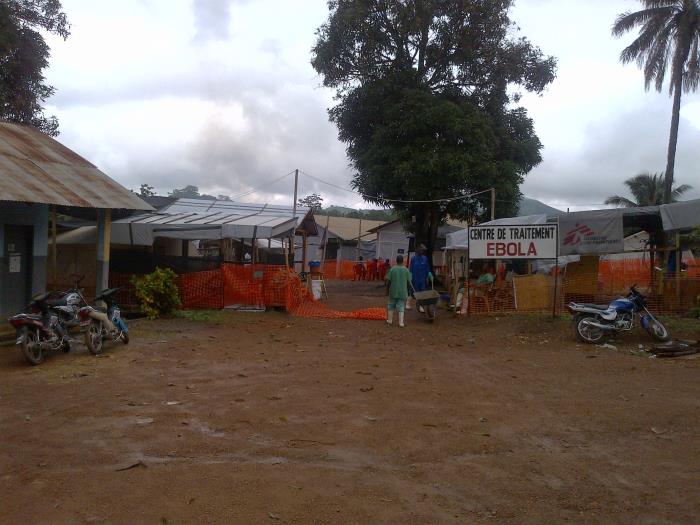More Intensive Care Could Improve Ebola Survival Rates, Researchers Say

Using more-aggressive Ebola-treatment measures — such as delivering abundant amounts of fluids intravenously, and carefully monitoring patients' electrolyte levels — could help more Ebola patients survive, a new report concludes.
But administering this level of care requires health care workers to spend a great deal of time on each patient. The problem is, health care workers in West Africa are already struggling to keep up with the outbreak, so it would be difficult for them to provide this level of specialized care, said Dr. Robert Fowler, an associate professor of critical care medicine at the University of Toronto, who has treated patients in West Africa and wrote the new report with his colleagues.
Fowler pointed to the relatively low mortality rate — 43 percent — among the patients treated in Conakry, Guinea, who were included in the new report. "We can get the vast majority of people through Ebola, and they can survive," if they are given such supportive care, he said.
In other words, what's needed most to stop the Ebola epidemic is more health care workers on the ground in West Africa, to give patients the needed level of treatment, Fowler said. [Where Did Ebola Come From?]
In the report, which is published today (Nov. 5) in the New England Journal of Medicine, Fowler and his colleagues outlined the observations they made as they treated some of the earliest cases in the outbreak, in March and April, in Conakry.
In treating the 37 people who were confirmed to have Ebola at the Conakry clinics over the course of a month, the researchers concluded that the most prominent problem for Ebola patients is the dehydration that often results from the vomiting and severe diarrhea seen in Ebola patients, Fowler said.
The aggressive measures used by the health care workers in Conakry played a role in keeping the mortality rate relatively low, Fowler said. However, he also noted that there are other factors that affect mortality rates in a given region, such as the length of time people are sick before they get treatment.
Sign up for the Live Science daily newsletter now
Get the world’s most fascinating discoveries delivered straight to your inbox.
But it is the dehydration that sends patients into a downward spiral. The kidneys — which remove waste from the blood and help maintain levels of electrolytes, such as calcium and potassium, in the body — become less efficient, and can eventually fail. Then, the electrolyte levels themselves can be life-threatening, Fowler said.
"Aggressive supportive care is used too infrequently for Ebola virus disease, but this may have an ability to lower mortality even beyond the 43 percent that we have shown in this study," Fowler told Live Science.
Patients with severe Ebola infections can lose 5 to 10 liters (1.3 to 2.6 gallons) of fluid per day, he said. "That's enormous," and health care workers can't keep up with this rate of fluid loss, said Fowler, who has now completed four trips to work in West Africa since the outbreak began. [2014 Ebola Outbreak: Ongoing Coverage of the Viral Epidemic]
In reality, at a treatment center, a staff of five or six doctors and nurses may enter a ward with 50 patients three or four times a day, Fowler said. They may have 45 minutes to see all the patients before they have to leave, take time to properly remove their protective gear and then attend to their other duties outside the ward itself. At most, a patient could be given 1 liter (0.26 gallons) of fluid during each of these visits, he said.
"There's no way they can put in all the fluids that are needed," Fowler said.
In some regions, equipment such as ventilators and dialysis machines might be helpful. "But what's much more important is the number of people that we have. We have the equipment, but we don't have time to do it," he said.
With aggressive supportive care, even without a drug that fights the Ebola virus itself, doctors can improve a patient's dehydration and electrolyte levels, he said.
The report also found that the patients over age 40 were 3.5 times more likely to die of Ebola than those under age 40. Researchers have suggested that the reason older people are more likely to die of Ebola is that they are more likely than younger people to also have other health problems. But that wasn't the case among the patients in the report, Fowler said.
"This makes us wonder if and how older age itself may make people less able to survive illness," he said, which should be looked at in future studies.
There have now been more than 13,500 cases of Ebola in the outbreak in West Africa, and at least 4,950 people have died, according to the report.
"Getting more people there to help will have much more impact to stop the outbreak," and improving the mortality rates could "change the whole paradigm about how people think about Ebola," he said. "If we build walls to getting people there, if we try to build walls to stop people from coming back, we will forever be battling this disease."
Fowler said he will return to West Africa to treat Ebola patients in December.
Follow Karen Rowan @karenjrowan. Follow Live Science @livescience, Facebook & Google+. Originally published on LiveScience.











